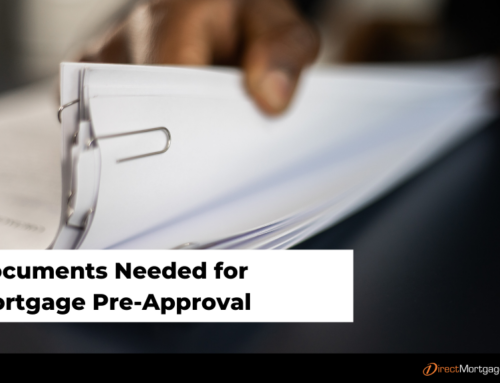What is House Flipping?
House flipping is a type of real estate investment in which a buyer purchases a property with the intention of increasing its value through updates and repairs to sell for a profit. Whether you have an interest in buying a flipped home or investing in one, take the time to research the process to see if this option is right for you. Purchasing a flipped house can be a great investment for buyers looking for a newly renovated property, but with anything, there are factors you should be aware of before making any decisions.
Advantages of Buying a Flipped Home
-
Move-in Ready
-
- Ideally, the home will be newly remodeled and updated with upgraded features before moving in. The moving process can be difficult, so not having to make any major repairs or put in extra work after moving in is a major benefit.
-
Fewer Contingencies
-
- Usually, when you buy a flipped home, you can move in right away. Typically, the investor does not occupy the home they’re trying to flip. Meaning you won’t have to worry about any delays such as waiting for the previous owners to vacate the home.
Potential Downsides of Buying a Flipped Home
-
Flippers Can Cut Corners
-
- Unfortunately, the upgrades and repairs may be hiding a more severe problem that could be costly to repair. Although the house may look brand new, there is no guarantee that the home will function properly. Because of this, you may have to put extra money into the structural aspects of the home such as replacing the roof, boiler, furnace, etc.
-
Improper Permits
-
- Make sure the home is up to code, meaning the developer pulled the right permits and used a licensed contractor. Permits are public records so you should be able to request them from your city’s building department.
Considerations to Take When Buying a Flipped Home
1. Consider the Type of Financing You Need
The first step in any home buying process is getting pre-approved for a loan. This will determine how much house you can afford. You will want to complete this step before searching for any properties. Start the pre-approval process today!
2. Find a Flipped Home
There are some key signs to determine if the home you want to purchase has been flipped. Some traits to look out for include fresh paint, new features, and appliances. Additionally, a flipped home will typically be vacant. The best way to identify if a home was flipped is to review the home’s sales history. Your real estate agent can help you identify this, or you could review the history from the local government’s public records, or by looking through websites such as Zillow to see if the house was sold less than six months ago, which usually signals a flip.
3. Research Who Flipped the Home
Conducting the proper research about the ‘flipper’ who originally purchased the home is a crucial step that could cost you thousands of dollars if overlooked. Determine what contractor completed the flip, the type of materials used and if the ‘flipper’ has prior experience in flipping houses. Your real estate agent can help you identify this information.
4. Have a Home Inspection
A home inspection is not required to purchase a home but can be highly recommended, especially with flipped homes. Additionally, a home inspection ensures that the home is both safe and worth its value. Learn more by reading our blog What to Keep in Mind During a Home Inspection.
What You Need to Buy a House To Flip
House flipping is not as easy as it looks and comes with a lot of challenging work and financial risk. Make sure you consider the following items before committing to flipping a home.
- Determine Financing & Overall Budget: Make sure to budget for any unexpected costs and consider your financing options. Below are a few ways you can finance your purchase. Learn more about these loan options by reading our blog HELOC vs Home Equity Loan.
- HELOC: A Home Equity Line of Credit (HELOC) is a line of credit secured by the equity of your house. This provides the borrower with a revolving line of credit. Typically, you can borrow up to 85% of the value of your home minus what you owe. You can re-establish your credit as you repay the outstanding balance.
- Home Equity Loan: A specific amount is borrowed and paid back with fixed monthly payments over a fixed period. This type of loan is ideal for one-time needs where you know exactly how much cash you need on hand.
- Research The Neighborhood: Research the market and different neighborhoods you are looking to purchase the flip in. An ideal area is one where homes sell quickly and have a high purchase price. Read our blog How to Find a Family-Friendly Neighborhood for more tips!
- Make an Offer: Once you have found a home, it’s time to make an offer and determine the repairs and renovations that need to be completed. Make smart investments and plan to work on repairs that will yield the most ROI. Read our blog 4 Home Renovations for Greater ROI for guidance on which projects will equate to a higher selling price.
- Establish a Timeline: Produce a realistic timeline, and schedule repairs in chronological order to avoid any delays. Remember, time is money, so the longer it takes to complete the repairs and sell the home, the more money you will spend on interest, insurance, and taxes.
- Follow the 70% Rule: According to Investopedia, the 70% rule states that an investor should pay no more than 70% of the after-repair value (ARV) of a property minus the repairs needed. The ARV is the value of a home after all repairs are complete.
-
- Example: If a home’s ARV is $150,000 and it needs $25,000 in repairs, then the 70% rule means that an investor should pay no more than $80,000 for the home: $150,000 x 0.70 = $105,000 – $25,000 = $80,000.
- Sell The House: Once all the repairs and renovations are complete, it’s time to sell the home for a profit. Determining your budget and cost of materials at the beginning of the process will help ensure you are able to sell the home at a profit.
Whether you’re looking to buy a flipped home or invest in one, make sure to do your research to ensure a smooth process. Contact Direct Mortgage Loans today to learn more about our mortgage solutions!







Leave A Comment
You must be logged in to post a comment.